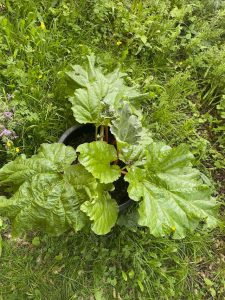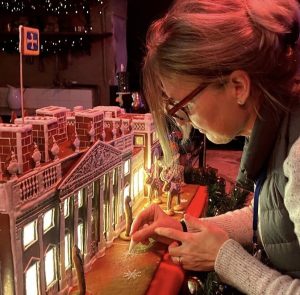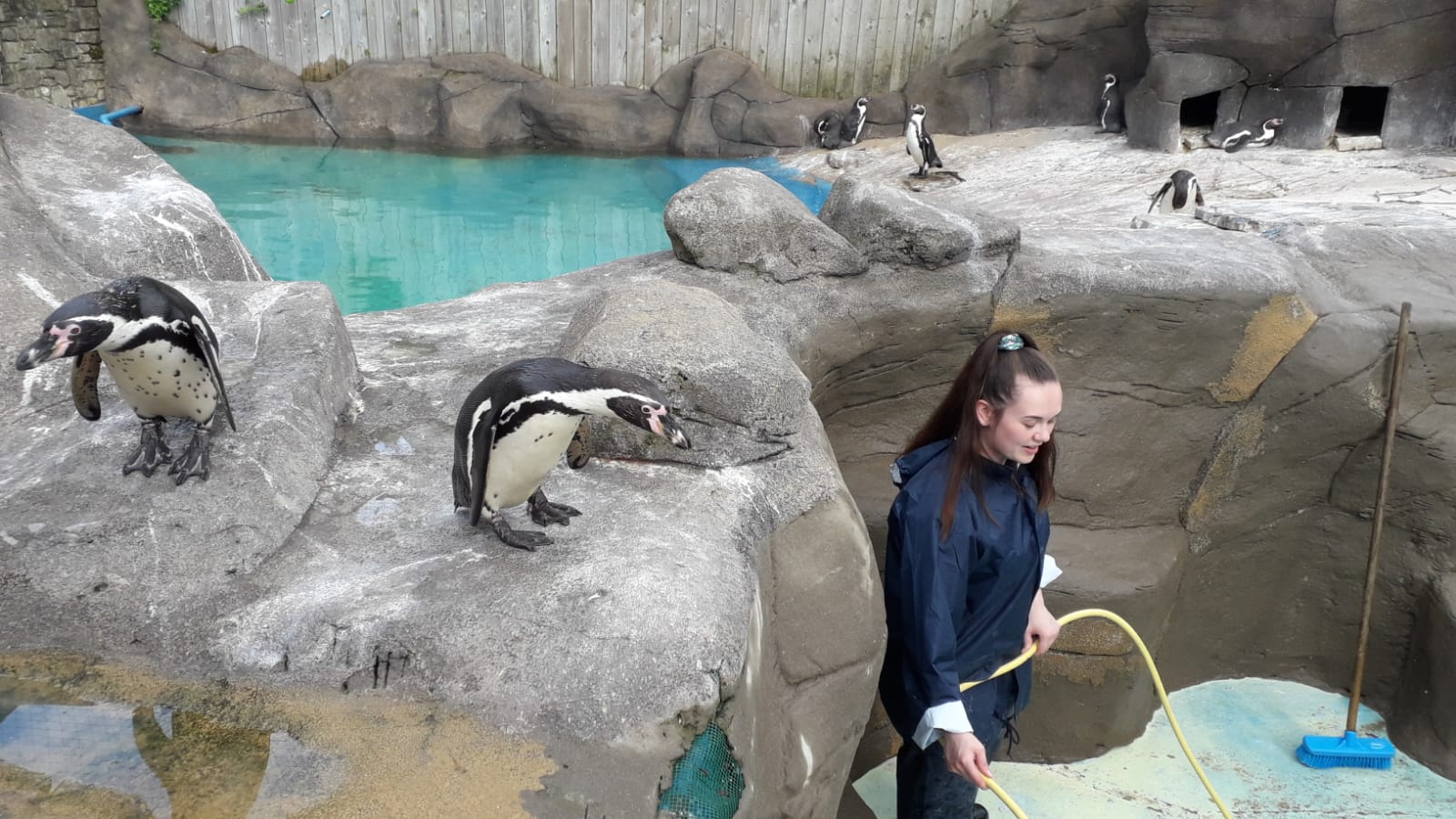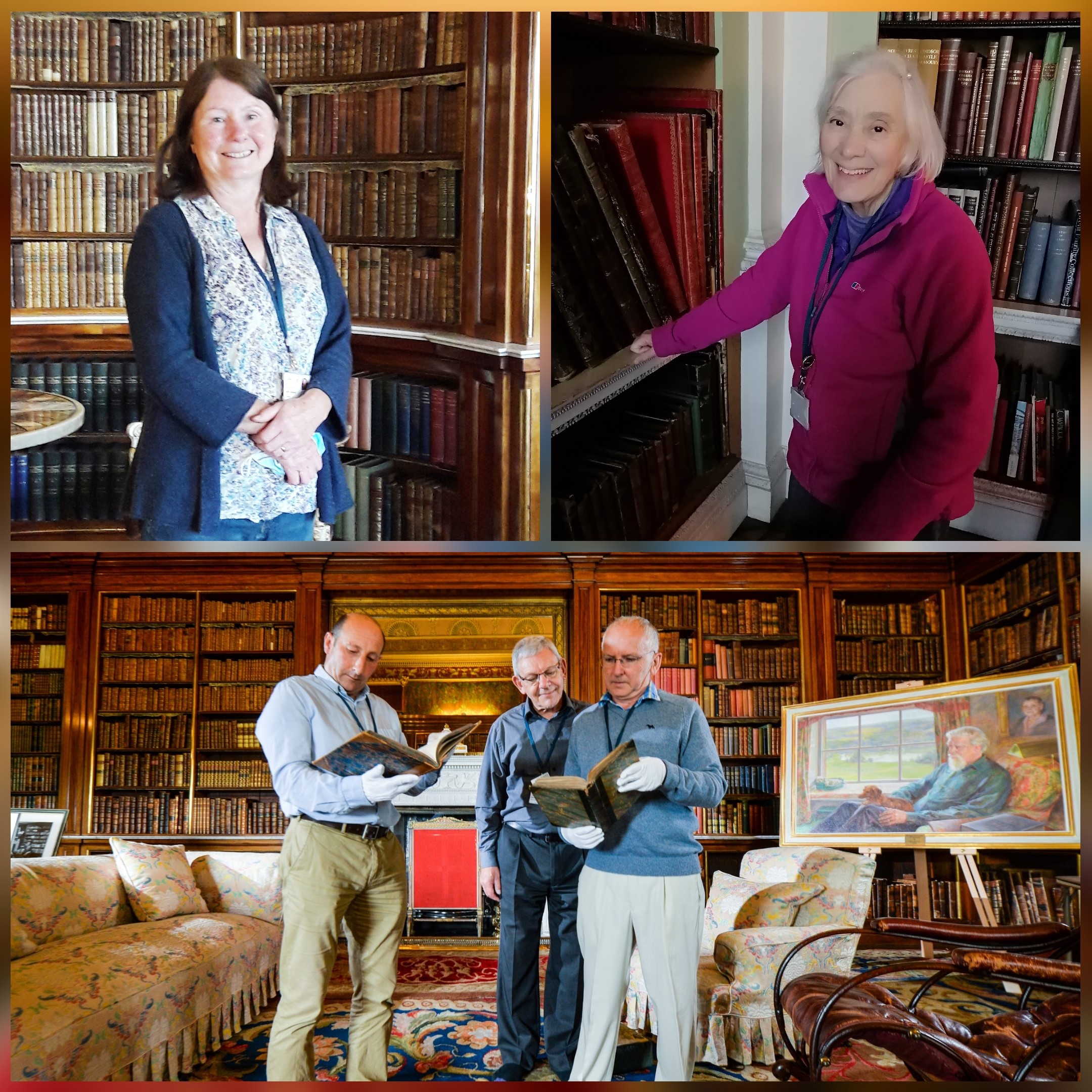
There are more than 10,000 books held within the 3 libraries – Main, Spanish and Old Library- at Harewood, collected by every generation of the Lascelles family and covering a range of different genres. A dedicated team of Library volunteers check the details of more than 11,000 books on the online catalogue, and adding extra information about their condition, contents, bindings, illustrations etc. This #VolunteersWeek, Kathy, Paul, Susan and Raymond take us through the work they do and what brought them to volunteering at Harewood.

“It is interesting to imagine who has read the books over the years.”
Kathy
Retired Librarian
My name is Kathy and I am a retired librarian, working with a small team of 3 other volunteers to update the catalogue for the library collection at Harewood. We are checking the details of all the more than 11,000 books on the online catalogue, and adding extra information about their condition, contents, bindings, illustrations etc.
Many of the books are 200 to 300 years old, and some are rare and valuable. What makes them especially interesting are the personal histories shown in many of the books. They contain bookplates and armorials belonging to the member of the family who collected them. They often have inscriptions showing who gave the book as a birthday or Christmas present, or who presented the book to show their esteem. Sometimes there are notes in the margins, and occasionally some doodles (such as those where a member of the family was getting bored during a long church service). Some contain sketches done by members of the family.
It is a privilege to work with so many old and rare books. It is interesting to imagine who has read the books over the years. Some of them are in quite a fragile state, with covers loose or detached, leather deteriorating, spines becoming split and corners damaged. We have to be as careful as possible when we are cataloguing these volumes so that we do not damage them further. They have to be preserved temporarily by taping them together, and handling them as little as possible. Conserving these books properly is a huge and ongoing task, but one which is certainly worth doing.

“I very nearly said ‘no’ to an offer to work at Harewood; I am so glad I didn’t.”
Paul
Former British Library employee
When I left the British Library and the best part of thirty years spent cataloguing I didn’t want to catalogue another book and I very nearly said ‘no’ to an offer to work at Harewood; I am so glad I didn’t. I was worried about being ‘stuck at home’ on my own all day and every day through the long, cold and wet Yorkshire winters.
The day I come here is often the best day of the week as I become a working person again, I get up early, dress smartly(?), and have a peaceful commute as I am able to leave home later than most people and the roads are quieter. I work in pleasant surroundings with friendly colleagues, no pressure, and the feeling that I am doing something useful again. As we only work in the mornings of our one day a week, I often stay at Harewood in the afternoons in summer, walk in the gardens, or sit and read. I love the Himalayan garden most of all. I previously worked in an anonymous office building on the edge of an industrial estate — here the house and gardens provide an exceptional environment. All this is of course conducive to better mental health in this age when we have suddenly discovered its importance.

“The rewards of working with congenial companions, in overwhelmingly beautiful surroundings, with such an amazing collection of books, and, crucially, no deadlines or statistics to achieve, have been enough to keep me at Harewood ever since.”
Susan
Library Volunteer since 2013
In 2003 I responded to an advert sent to the British Library asking for volunteers to join a team working on a new Library Project at Harewood House. I was due to retire shortly and this was a perfect opportunity for me to continue working with books as I have done all my life. I was told that there were already two qualified librarians, transferring records from the existing 20th century card catalogue onto a database. This was the first phase of preparing an on-line catalogue of all the books in the three libraries on the State Floor.
Coming to Harewood was an opportunity to immerse myself in a worthwhile project, helping to secure the future for a valuable and remarkable collection of largely rare books. The rewards of working with congenial companions, in overwhelmingly beautiful surroundings, with such an amazing collection of books, and, crucially, no deadlines or statistics to achieve, have been enough to keep me at Harewood ever since.
During the pandemic we unfortunately had to suspend activity for a while, but I am glad to say that we are now back at Harewood, though we have to work on different days and in different locations. We shall no longer be working as the tightly-knit group we were before, but we shall do our best. I don’t mind working on my own, but I do enjoy being in the libraries, surrounded by beautiful furniture and books and able to chat from time to time with staff, volunteers and visitors.
We do still get asked why we are not wearing white gloves when we handle such precious books, but we tell them that experts consider that bare hands are safer and more sensitive than gloves and thus do less harm.
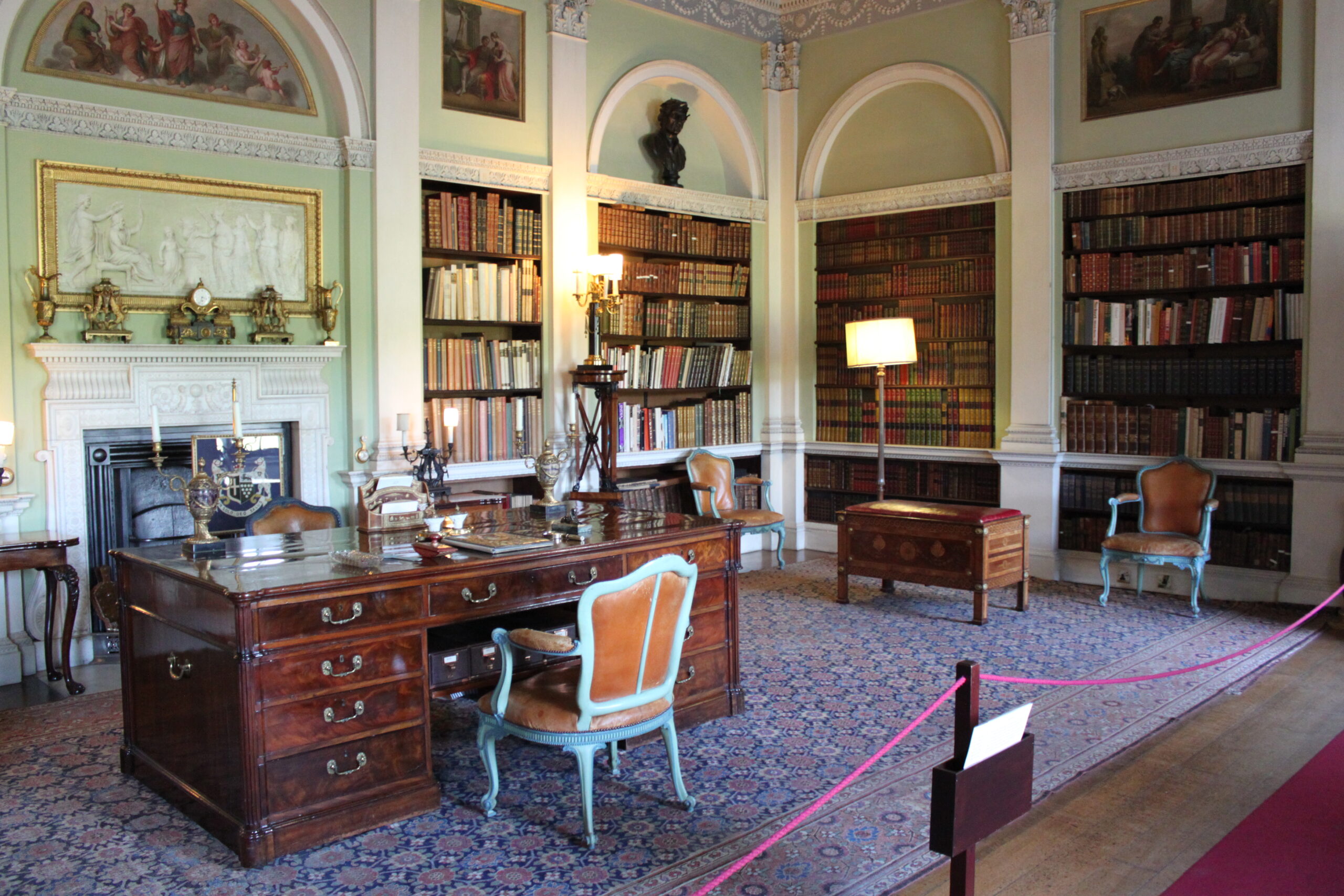
“I began having ‘Wow’ moments, when a hand written document from a member of the Royal Family or famous people writing to the various Earls dropped from the pages.”
Raymond
Retired Dentist
This retired dentist decided there was more to life than teeth. And so, having helped Special Needs children to read and then joining the Leeds University Library as a mover and shelving assistant for six years ending in Special Collections working with important documents, I discovered that Harewood House needed volunteers. I spent two years talking to visitors about the house and its history, all the time looking enviously at the library books and wishing I could get involved with them. Then, lo and behold, I was invited to join the team. My first job, which lasted six years, was to list all the books in the Bazaar Room and the shelves outside the offices and in adjacent rooms.
In came boxes and boxes of books spanning the various ages of the house, from religious volumes to children’s books and novels galore. There are also many years of hand-written weather books of Harewood. I began having ‘Wow’ moments. These were when a hand written document from some member of the Royal Family or famous people writing to the various earls dropped from the pages. I spent the next nine years creating catalogue cards for each volume with author, title, publisher, date of publication and a number. About 3,600 of these books have been entered on the data base and are being archived in detail.





